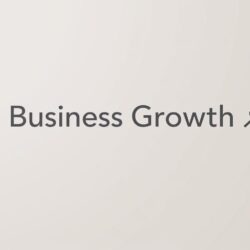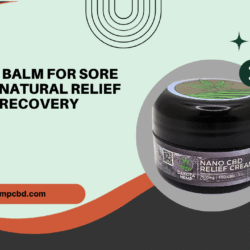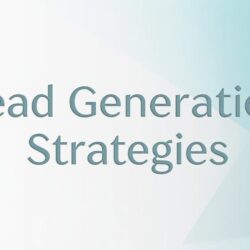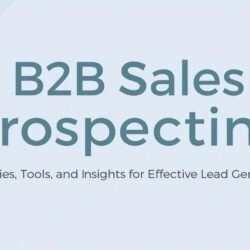For B2B Brands in 2025, LinkedIn has become the primary platform for engaging decision-makers, building credibility, and generating high-quality leads. Its vast network of professionals allows brands to establish authority, nurture relationships, and influence purchasing decisions. As B2B marketing becomes increasingly sophisticated, leveraging LinkedIn strategically enables brands to connect with targeted audiences while demonstrating expertise and thought leadership in their industries.
Defining Objectives for LinkedIn Campaigns
Effective LinkedIn marketing starts with clear objectives. B2B brands in 2025 set specific goals such as expanding brand awareness, driving qualified leads, promoting thought leadership, or fostering community engagement. Well-defined objectives guide campaign planning, content creation, and performance measurement. By aligning LinkedIn efforts with overarching business goals, marketers ensure campaigns contribute to meaningful outcomes, making the platform a strategic driver of growth rather than just a communication channel.
Audience Segmentation for Precision Marketing
Understanding audience dynamics is crucial for engagement. LinkedIn provides detailed insights into follower demographics, including industry, role, company size, and geographic location. B2B brands in 2025 use this data to segment their audience, delivering personalized content that resonates with specific groups. Predictive analytics and intent data further enhance targeting, allowing marketers to anticipate audience needs and provide relevant solutions at the right stage of the buyer journey.
Creating Value-Driven Content
Content is the cornerstone of LinkedIn marketing. B2B brands in 2025 prioritize educational and informative content that addresses audience pain points and highlights expertise. Case studies, whitepapers, industry insights, and thought leadership articles establish credibility and trust. Visual content such as infographics, video explainers, and slideshares simplify complex concepts, increasing engagement and retention. A consistent content strategy helps maintain visibility, reinforces brand messaging, and encourages meaningful interactions with decision-makers.
Visual Storytelling to Capture Attention
Visual storytelling enhances engagement by communicating ideas quickly and memorably. Short videos, infographics, and branded imagery help B2B brands convey messages in an easily digestible format. In 2025, video content drives the highest engagement, making it essential for capturing attention and showcasing brand personality. Sharing behind-the-scenes glimpses, customer success stories, and industry insights through visuals builds trust and encourages interaction.
Employee Advocacy Programs
Employees serve as authentic brand ambassadors. Encouraging team members to share updates, insights, and achievements amplifies reach organically. B2B brands in 2025 implement structured advocacy programs, offering guidance, training, and incentives to motivate participation. Employee-generated content enhances credibility, humanizes the brand, and strengthens professional networks, resulting in broader visibility and higher engagement rates.
Paid Campaigns and Sponsored Content
Paid campaigns complement organic strategies by targeting specific decision-makers with precision. Sponsored content, InMail campaigns, and display ads enable B2B brands to reach executives based on job role, company size, and interests. AI-powered optimization ensures that campaigns maximize engagement and ROI. By integrating paid and organic strategies, B2B brands in 2025 achieve a balance between visibility, credibility, and lead generation.
Thought Leadership and Executive Presence
Establishing thought leadership positions brands as trusted industry authorities. Executives sharing insights, commenting on trends, and participating in discussions strengthen credibility. B2B brands in 2025 leverage executive presence to humanize the organization, build relationships, and increase engagement. Consistently publishing authoritative content establishes a recognizable voice, attracting prospects and reinforcing brand reputation.
Leveraging LinkedIn Groups and Communities
LinkedIn Groups offer a platform for professional discussions and engagement. B2B brands in 2025 actively participate in relevant communities to provide insights, answer questions, and facilitate conversations. Hosting discussions, sharing resources, and encouraging peer interaction fosters trust and positions the brand as a thought leader. Strong community engagement strengthens professional networks and generates leads through relationship-building rather than direct promotion.
Data-Driven Optimization
Analytics is crucial for measuring performance and guiding strategy. Metrics such as engagement rate, impressions, click-through rate, and conversions provide insights into content effectiveness. B2B brands in 2025 integrate LinkedIn analytics with CRM and marketing automation systems to track how engagement translates into pipeline and revenue. Data-driven optimization ensures campaigns evolve based on audience behavior, maximizing impact and return on investment.
Personal Branding for Leadership
Executive visibility on LinkedIn enhances brand credibility. Leaders sharing personal insights, industry perspectives, and professional experiences humanize the brand and foster trust. B2B brands in 2025 encourage executives to maintain an active presence, contributing to thought leadership, engagement, and long-term relationship-building with key stakeholders. Personal branding amplifies the organization’s expertise and increases influence within professional networks.
Integrating LinkedIn with Multichannel Marketing
LinkedIn works best when part of a larger marketing ecosystem. Integration with email marketing, webinars, content syndication, and account-based campaigns creates a cohesive buyer journey. B2B brands in 2025 align messaging across channels, ensuring that content reaches audiences consistently and reinforces brand positioning. Cross-channel integration maximizes lead nurturing and enhances conversion opportunities by providing multiple touchpoints for engagement.
Adapting to Platform Changes and Trends
LinkedIn evolves continually, with changes in algorithms, content formats, and user behavior. B2B brands in 2025 maintain agility by testing new formats, monitoring audience responses, and adjusting strategies to remain effective. Experimenting with newsletters, live audio events, and interactive posts helps maintain relevance. Agility ensures that LinkedIn remains a reliable channel for growth and positions the brand ahead of competitors in a dynamic digital landscape.
Measuring ROI and Business Impact
Tracking results is essential to validate LinkedIn efforts. B2B brands focus on metrics tied to revenue, including qualified leads, conversion rates, and pipeline influence. Analytics allows marketers to connect engagement to tangible outcomes, demonstrating value to stakeholders and informing resource allocation. ROI-driven strategies ensure LinkedIn investment contributes meaningfully to business growth.
About Us
Acceligize is a global B2B demand-generation and technology marketing firm specializing in performance-driven lead generation solutions. Their services include content syndication, account-based marketing, intent and install-based targeting, and custom campaign strategies. Leveraging data science, technology, and human intelligence, Acceligize helps clients reach high-quality audiences and drive conversions across the full marketing funnel.





